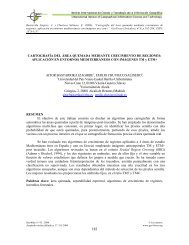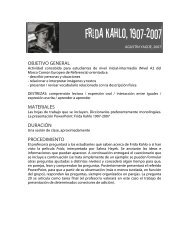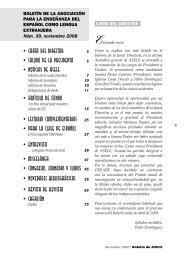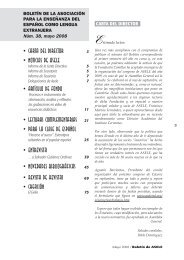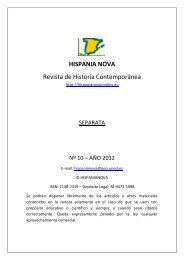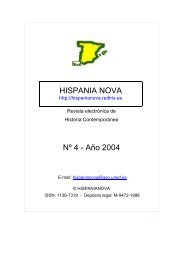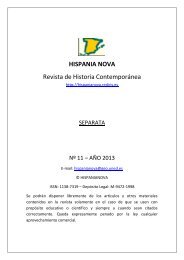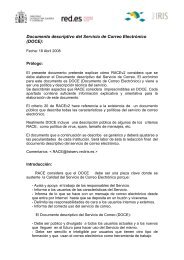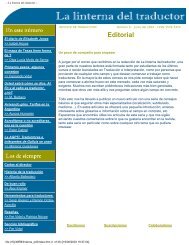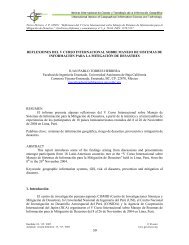Preparing an IPv6 Addressing Plan Manual - RedIRIS
Preparing an IPv6 Addressing Plan Manual - RedIRIS
Preparing an IPv6 Addressing Plan Manual - RedIRIS
- No tags were found...
Create successful ePaper yourself
Turn your PDF publications into a flip-book with our unique Google optimized e-Paper software.
is less suited to implementing firewall policies, which are based on the bits in theaddress <strong>an</strong>d are thus compatible with the hexadecimal format.2. The VLAN number c<strong>an</strong> be incorporated into the <strong>IPv6</strong> address hexadecimally,so that one hexadecimal digit in the <strong>IPv6</strong> address will remain unused. If, forexample, we choose to leave the left digit as 0, we c<strong>an</strong> still use the digits 1through F for the hexadecimal notation.For inst<strong>an</strong>ce:VLAN number <strong>IPv6</strong> decimal <strong>IPv6</strong> hexadecimal1 2001:db8:1234:0001::/64 2001:db8:1234:0001::/6412 2001:db8:1234:0012::/64 2001:db8:1234:000c::/644094 2001:db8:1234:4094::/64 2001:db8:1234:0ffe::/644.9.1Reversing VLAN notations in <strong>an</strong> <strong>IPv6</strong> structureThere are also options for reversing previously defined VLAN notations. If, forexample, the VLAN numbers are assigned first by location <strong>an</strong>d then by use type, it isstill possible to assign the <strong>IPv6</strong> addresses in the reverse order: first by use type <strong>an</strong>dthen by location.In the following example of a VLAN structure, the hexadecimal notation of the VLANnumber, location <strong>an</strong>d use type is placed between brackets:VLAN number Location Use type0001 (001) 0 (0) 1 (01)0529 (211) 2 (2) 17 (11)4094 (FFE) 15 (F) 254 (FE)In this example, the first 4 bits of the VLAN number identify the location. Theremaining 8 bits describe the use type. By copying this directly to the <strong>IPv6</strong> address,we are able to optimise the routing table, but not the security policy. The reason forthis is that the location is at the start of the address while the use type follows it.However, if we wish to use the <strong>IPv6</strong> addresses to optimise the security policies, theuse type has to be at the start of the address.To arr<strong>an</strong>ge this, we c<strong>an</strong> move the first 4 bits of the VLAN number (which describethe location) to the back to become the last 4 bits of the <strong>IPv6</strong> subnet. The last 8 bitsof the VLAN number (which describe the use type) c<strong>an</strong> be placed in front of these.4.9.2Hexadecimal notationHexadecimal notation is further explained using the example below. Thehexadecimal notation of the VLAN number, location <strong>an</strong>d use type is placed betweenbrackets.16<strong>Preparing</strong> <strong>an</strong> <strong>IPv6</strong> <strong>Addressing</strong> Pl<strong>an</strong>




